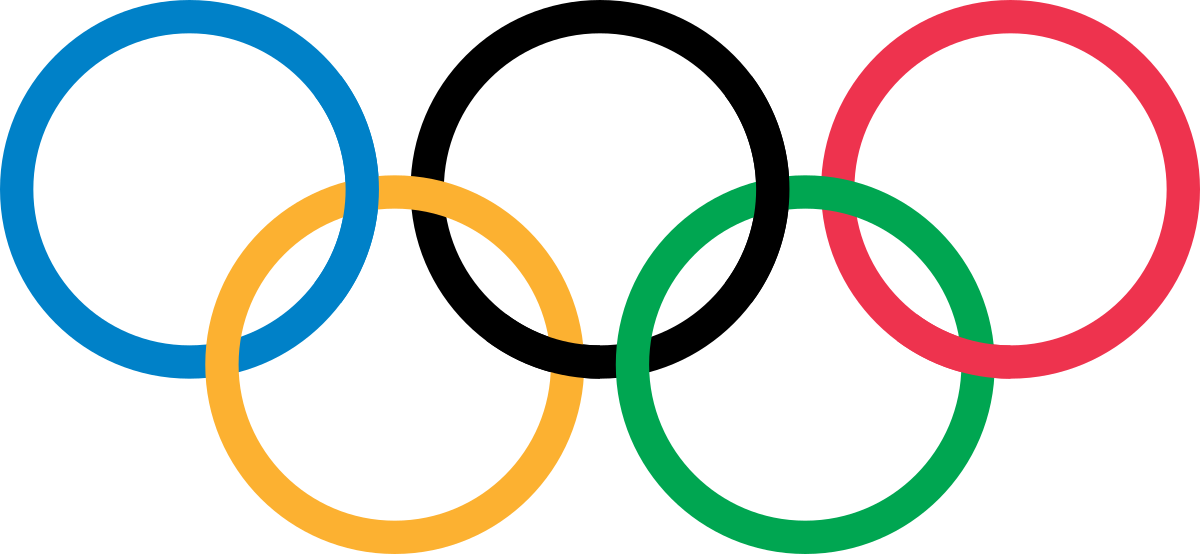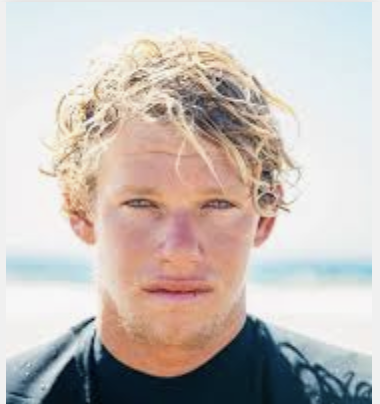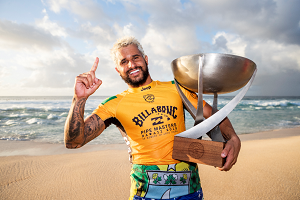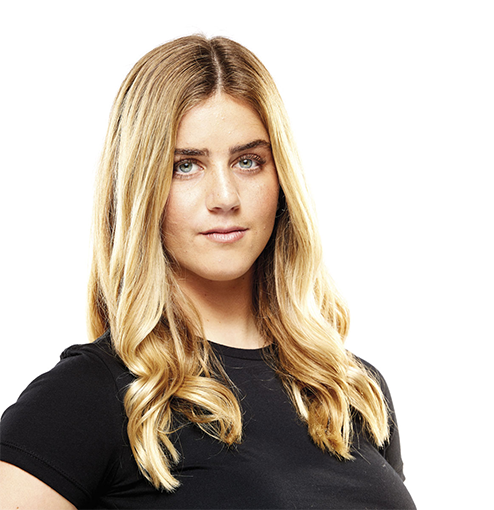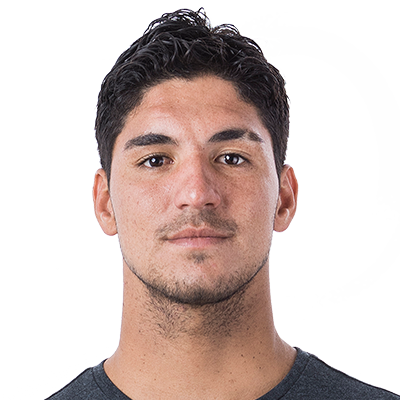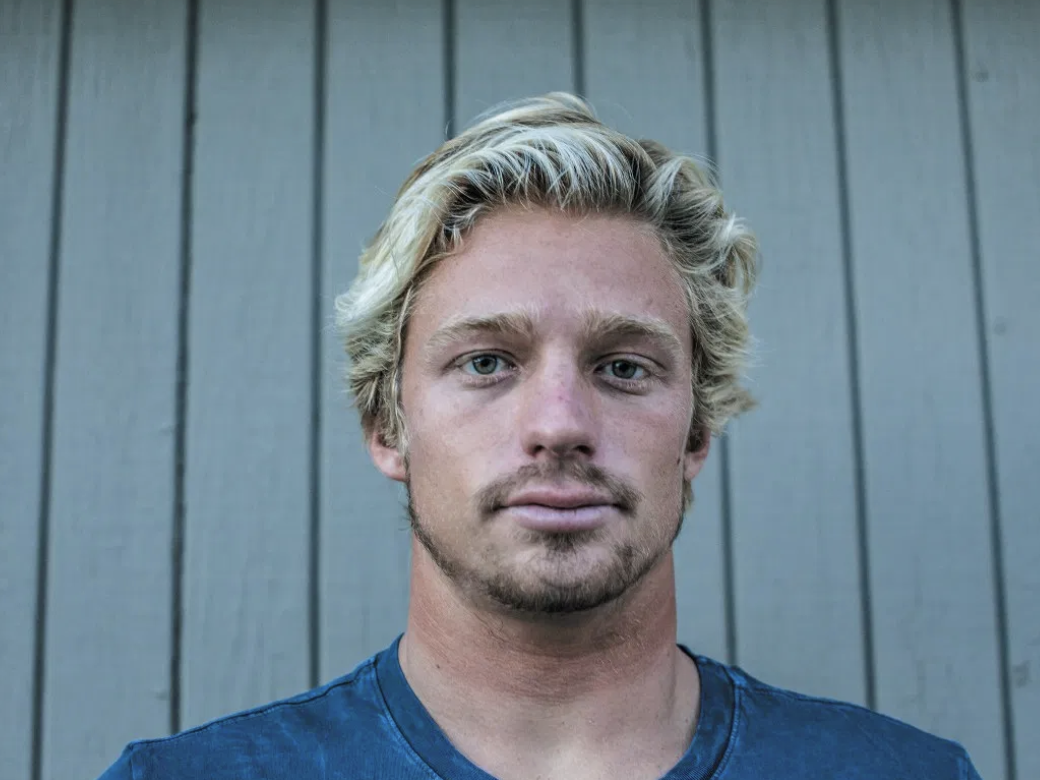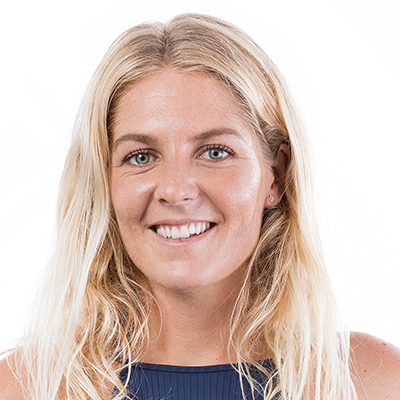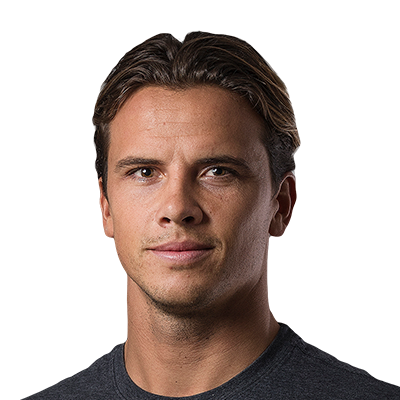OLYMPIC SURFING
OLYMPIC BEGINNINGS
Over one hundred years ago, it was Olympic swimming champion and father of modern surfing Duke Kahanamoku’s dream to see surfing in the Olympics. And in Tokyo, it’s finally happening. However, the road to incorporating surfing into the Olympics was not easy – it took many years of lobbying and a new system had to be determined for who qualifies for the Olympics.
Fernando Aguerre was a member of Argentina’s National Surfing Team in the early 90s and in ‘95 was elected President of the International Surfing Association (ISA). The first real move towards Olympic surfing was shortly after his election, when he met with the President of the International Olympic Committee (IOC) to suggest the idea to him. Not much happened.
Aguerre spent years unsuccessfully trying to add surfing to the Olympics. His breakthrough came when Thomas Bach took over the IOC as President in 2013. He apparently “brought a fresh vision to the Olympics,” according to the ISA. A few years later, in August 2016 at the 129th IOC Session held in Rio de Janeiro, the committee voted to include surfing as one of the five new sports added to Tokyo 2020.
Award-winning former chief columnist for NBCOlympics.com Alan Abrahamson believes the IOC is adding surfing to the Olympics to draw the attention of younger generations. “The IOC is in the business of trying to be relevant to a specific demographic audience,” he says, referring to teens and twenty-somethings, “and surfing is a way to try to reach that particular audience.”
After the addition of surfing to the Olympics, Aguerre said, “It’s an opportunity for a huge legacy, a cultural experience – not just a sport competition.” He calls the ocean “the world’s biggest equalizer,” because “you don’t need to belong to a certain race, religion, gender, weight size or anything to surf.” His comment especially rings true regarding gender parity, considering that women and men are paid equally for competition wins.
As Olympic qualifications began in 2019, the International Olympic Committee looked to surfing’s leading organizations – the International Surfing Association and the World Surf League – for specifics on qualifications, competition rules, and more.
The World Surf League organizes the Championship Tour (CT) each year, a series of up to 13 competitions worldwide that determine the rankings for the best surfers in the world through an accumulation of points, which depend on how they perform against each other during these events.
These 2019 CT rankings were crucial for both men and women in securing a spot at the Tokyo Olympics.
OLYMPIC QUALIFICATION
In Olympic surfing, 40 athletes in total will compete – 20 men and 20 women. Two men and two women per country. The International Surfing Association has a hierarchy of competitions and rankings for determining a surfer’s spot in the Tokyo Olympics.

A provisionary list of qualified athletes for surfing in Tokyo.
First in order of importance is the World Surf League’s Championship Tour. The first ten eligible men and the first eligible women are selected. This does not just mean the ten highest ranked men or women on the tour because only two athletes per gender per country are allowed. For example, the first two men ranked on the tour who fought for the world title (and #1 ranking on this list) at December’s Pipeline Competition a few months ago are both Brazilians – Italo Ferreira and Gabriel Medina. They’ve both taken the two Olympic spots for Brazil. So although Brazilian Filipe Toledo comes in as a top ten surfer at 5th on the 2019 CT ranking, he will not qualify for the Tokyo Olympics. This process continues down the list as the next eight eligible athletes qualify for their countries, and same for the women.
After the first 20 athletes are selected from the CT rankings, the rest will be from the following, in order of importance – the 2020 ISA World Surfing Games, the 2019 ISA World Surfing Games, and the Pan American Games. And finally, the host nation, Japan, will be guaranteed spots for one man and one woman if not already fulfilled in the above categories.
As the 2020 ISA World Surfing Games have not yet occurred, the photo above right shows a list of athletes who have qualified so far for Tokyo 2020.
Many were disappointed to see that Kelly Slater, surfing’s greatest of all time and 11-time World Champion, did not make the Olympic cut. His loss to John John Florence at the Pipeline Semifinals in December took away his chance. Hawaiian-born Florence will be joined by Kolohe Andino at the Olympics, a San Clemente native. On the women’s side, Hawaiian Carissa Moore and Florida native Caroline Marks will represent the USA.
The ISA explains the qualification process visually through a video here.
Photos: WSL, Surfer Magazine, Carve Surfing Magazine, Outside Magazine, Pinterest, Vans Triple Crown of Surfing
CHAMPIONSHIP TOUR COMPETITION BREAKDOWN
It’s likely that the Olympic competitions will follow a similar process to that which already exists on the Championship Tour, in terms of heat breakdowns and judging. Here’s a quick run through of the World Surf League’s Championship Tour:
A typical CT competition for men starts out with 36 surfers, first separated into 12 heats of 3 athletes who compete against each other. Surfers are slowly eliminated until two surfers are left in the final round and a winner is declared. A typical CT competition for women progresses similarly, except women begin with 18 surfers and have one less round.
Judges give scores out of ten on how well a surfer rides a wave – how many tricks he or she can do, or in a tough wave like Pipeline, even just riding through it well can get you a perfect ten, just like Kelly Slater’s ride here in December 2019. Typically, five judges will score an athlete on his or her wave. The highest and lowest scores are eliminated, and the surfer gets the average of the remaining three scores. And finally, the top two scoring waves are combined to give a surfer’s heat total out of 20.
Then, depending on competition performance, a surfer’s overall CT ranking is determined by a set of points given to him or her. For example, placing first in a CT competition wins an athlete 10,000 points. Brazilian surfer Italo Ferreira, last year’s world champion, finished first in the CT rankings with just under 60,000 points and almost half a million dollars in prize winnings.
The biggest and final competition is the Billabong Pipe Masters at the end of the year, where the World Champion is decided after a final cumulation of points. Usually, the winner is predetermined due to the points system, but it was different (and more interesting) this past year because the two finalists at Pipe – Ferreira and Medina – were close enough in points to both be in contention for the World Championship.
SURFING'S POST-OLYMPIC FUTURE
Now that surfing is set to debut on a bigger stage, what comes into question is its growth as a sport after the Olympics. With a fairly steep learning curve, the looming threat of unfriendly locals, and a general air of intimidation that surrounds the sport, surfing is thought to be pretty niche and limited to those who live on the coasts. However, man-made wave pools popping up across the U.S. will provide many with ways to get in the water, even if you don’t live by the ocean.
Olympic expert Abrahamson believes that surfing will have a similar spike in growth as snowboarding did after the 1998 & 2002 Winter Olympics. “Before 2002, snowboarding was kind of the bad boy of being on the mountain,” he says.
Additionally, Abrahamson believes that the rise of wave pools will lead to a nationwide expansion of surfing. A popular recent example of this is Kelly Slater’s wave pool in Lemoore, just 40 minutes south of Fresno in central California.
The wave pool idea came to Slater over ten years ago. In the process he worked with USC Viterbi School of Engineering professors to figure out if a man-made wave was even feasible. Slater’s original idea consisted of a circular wave pool because he wanted a never-ending wave. While he and his Viterbi engineers were unable to make that happen, they were still pretty successful in creating a perfect barrel for the many pro surfers who have already visited the wave pool.
According to ESPN, Slater’s wave pool (like others) is powered by a locomotive. It runs parallel to the pool, dragging a hydrofoil apparatus underneath the water to power the wave. The waves form once the large push of water hits certain parts of the pool’s bottom floor. Each wave lasts about 45-60 seconds, and the wave pool extends for just under half a mile.
An hourlong session at the Kelly Slater Wave Co. ranch costs about $10,000 and is – for the most part – closed off to the public. However, not all wave pools run at this high a cost.
For example, another popular spot for wave pool surfing is at the BSR Surf Resort in Waco, Texas, which has also seen a variety of pro surfers visit. It’s an extension of the BSR waterpark, and rides are still pricey at $90/hour but are much more affordable in comparison. The park also offers beginner hours for $60.
While wave pools may be slightly harder to come by at the moment, Abrahamson believes that just like snowboarding, surfing will take a few years to grow, and wave pools will help it do so: “Eventually these wave pools are going to change the entire sport of surfing.”
This is exciting. Young aspiring surfers in landlocked states or places with less-than-ideal beach breaks will no longer have to dream of Hawaii’s North Shore, Fiji’s Cloudbreak, or Malibu’s First Point: “Once you can take surfing away from the ocean and make it accessible to people everywhere, then surfing will become amazingly cool and hip everywhere because it’s got the California vibe, and everyone wants in on that,” says Abrahamson.
Slater’s next move is a wave pool to be featured in a “luxury resort” in La Quinta, California, a community neighboring the famed Coachella music festival fields, just a two-hour drive east of Los Angeles. The wave pool alone is said to be a $200 million investment, which is steep in comparison to the $30 million Lemoore endeavor.
Abrahamson believes that once people regain their financial footing after the pandemic, surfing will begin to rise in the U.S. “If you could take a wave pool and put it in my hometown of Dayton, Ohio, and everyone can surf, then the sport is absolutely going to explode. And that’s what my prediction is for what surfing can, will and should be.”
